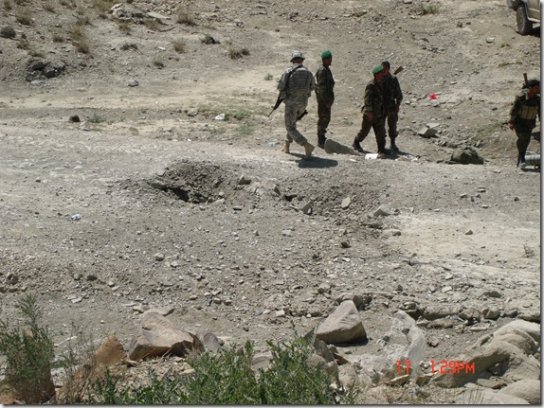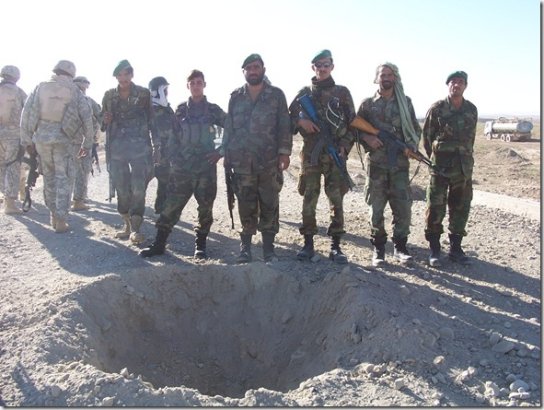This one is from the NATO channel
The Kunduz Provincial Reconstruction Team has been under attacks from insurgents. Get an inside perspective with Soldiers from the PRT’s Golf platoon as they go on a long-term patrol. July 12 For more videos check out NatoChannel.tv
.
Know your IEDs ( these are what our troops have to deal with ~ Wild Thing )
This information is to show the most probable type of IED you may see, and not necessarily how to defeat it. In keeping with protecting our troops and not giving the enemy the how to’s of our awesome troops.
I would like to thank Afghan Lessons Leraned for Soldiers for this information and photos below. ~ Wild Thing
IEDs in Afghanistan are not as sophisticated as they typically are in Iraq but they tend to be much, much larger.
There are signs to look for on the side of the road, in the road and how to know what areas on the road are the highest risk.
I will talk about how you as a service-member may be traveling the roads could make a good guess as to what kinds of IEDs may be on the route you want to take.
There are several categories and sub-categories of IEDs. There are victim-initiated and command detonated.
Victim-initiated (VI) are dumb IEDs and the most dangerous. They don’t distinguish between local Afghans or coalition soldiers. They don’t require a triggerman or spotter. As the name suggests, they are triggered by the victim themselves. Good examples would be pressure plate IEDs or even a basic landmine.
Command Detonated (CD) IEDs are smarter than victim-initiated as in they require a trigger man to detonate. These triggers could be hardwired to the explosive or remote control detonated via a wireless signal of some type. There will always be a triggerman and these triggermen will almost always have “eyes on” the location of the IED so they know when to “trigger” it.
It is common to fine VI IEDs on routes that are not as heavily traveled by Afghans, and are usually on routes where the enemy can influence the locals to stay off of the route. The local areas can be informed of the threat so they don’t travel on the route. This raises the chance that only coalition forces will be the ones to initiate the IED. So this means you will rarely see VI IEDs on routes that have heavy traffic. For lack of a better term, these would be main supply routes (by Afghan standards).
Another example is that you can expect to see VI IEDs on routes which are one way (into a dead end of a valley, etc.), or on routes between small villages. This is why it is important to practice very good opsec and not allow your movement plans to leak out. If the enemy finds out you are planning to visit a particular location then it helps them know what routes they stand the highest chance of hitting you on.
CD IEDs will typically be found on high-traffic routes where any number of people could travel (jingle trucks, taxis, coalition forces, etc.) On these types of routes the enemy wants to be more selective of their target and hit the right target at the right time. While on these types of routes where there is a higher chance of seeing CD vs. VI IEDs you always want to have situational awareness of the area around you and in front of you to keep an eye out for the trigger man. There is also a slight chance to see VI IEDs on routes like this as I once experienced myself.
While on one mission, a part of our unit used a specific route that we were not aware of. Because of that and the fact that an IED cell was given an alert that we were heading down the road, they were able to hastily plant a standard anti-tank landmine with a modified tilt-rod. They did this as we rolled down the road and as we found out later, just barely got it installed before we came up on them. In fact the IED planter rode his bike right by my truck and even waved to me.

Command detonated IED hole that killed two and wounded two. This was a double-stack daisy-chain “pusher charge”
.

What a hastily planted anti-tank landmine will do to an Afghan Army Light Tactical Vehicle.
.

Hole left by Remote Controlled IED set off by a trigger man with bad timing. It blew right before the lead Humvee got to it. As you can see by the size of the hole, this was built for serious damage.
.

Wild Thing’s comment…….
God bless all our awesome troops. This was such great information and I wanted to share it with all of you.
